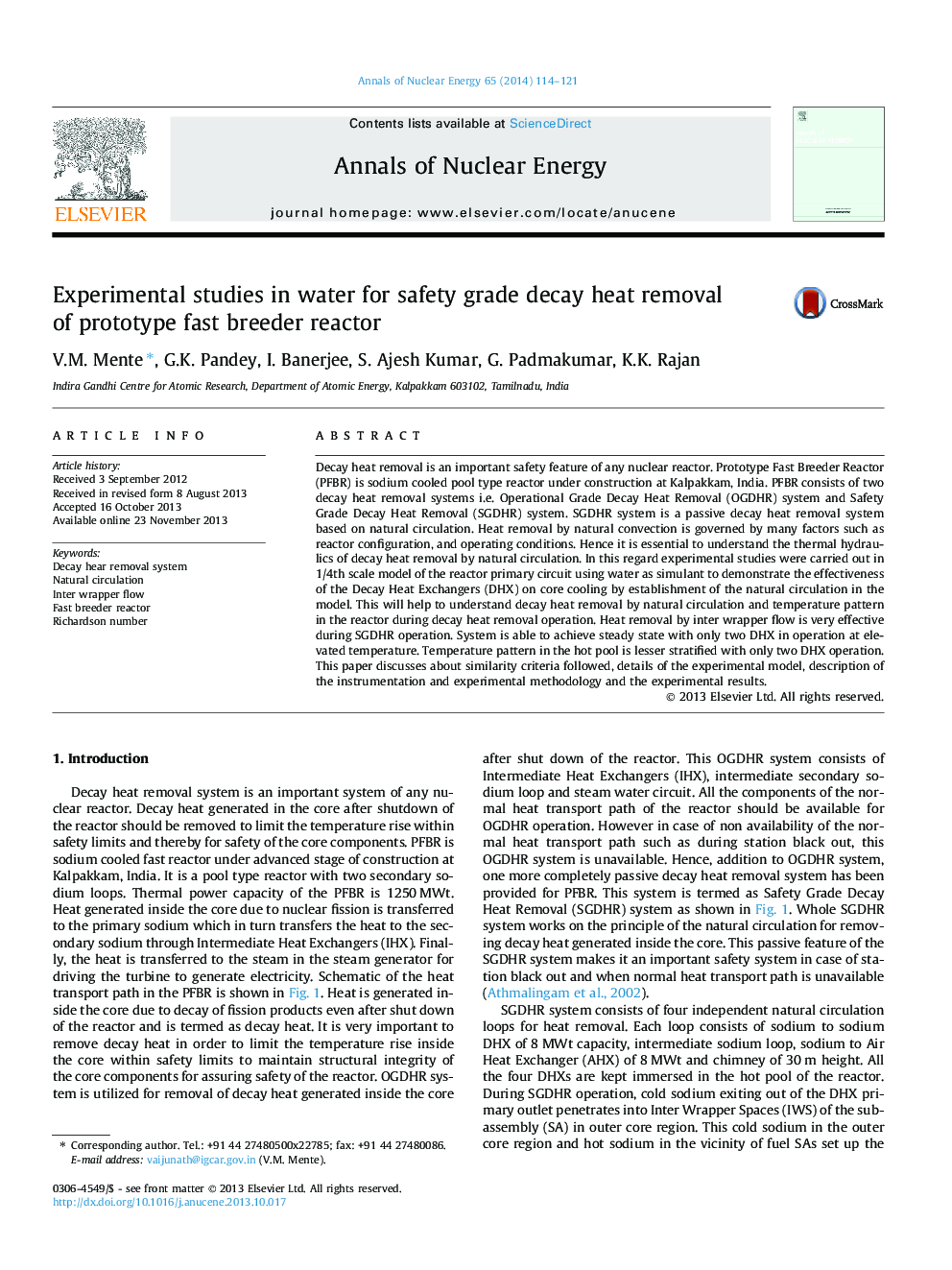| Article ID | Journal | Published Year | Pages | File Type |
|---|---|---|---|---|
| 1728406 | Annals of Nuclear Energy | 2014 | 8 Pages |
•Decay heat removal in fast reactor is very important for its safe operation.•Studies were conducted in scaled down model with water as simulant.•Various simulated events were also studied to evaluate the complete system.•Experiments have successfully demonstrated the heat removal by natural circulation.•Results of these studies will be utilized for code validation.
Decay heat removal is an important safety feature of any nuclear reactor. Prototype Fast Breeder Reactor (PFBR) is sodium cooled pool type reactor under construction at Kalpakkam, India. PFBR consists of two decay heat removal systems i.e. Operational Grade Decay Heat Removal (OGDHR) system and Safety Grade Decay Heat Removal (SGDHR) system. SGDHR system is a passive decay heat removal system based on natural circulation. Heat removal by natural convection is governed by many factors such as reactor configuration, and operating conditions. Hence it is essential to understand the thermal hydraulics of decay heat removal by natural circulation. In this regard experimental studies were carried out in 1/4th scale model of the reactor primary circuit using water as simulant to demonstrate the effectiveness of the Decay Heat Exchangers (DHX) on core cooling by establishment of the natural circulation in the model. This will help to understand decay heat removal by natural circulation and temperature pattern in the reactor during decay heat removal operation. Heat removal by inter wrapper flow is very effective during SGDHR operation. System is able to achieve steady state with only two DHX in operation at elevated temperature. Temperature pattern in the hot pool is lesser stratified with only two DHX operation. This paper discusses about similarity criteria followed, details of the experimental model, description of the instrumentation and experimental methodology and the experimental results.
